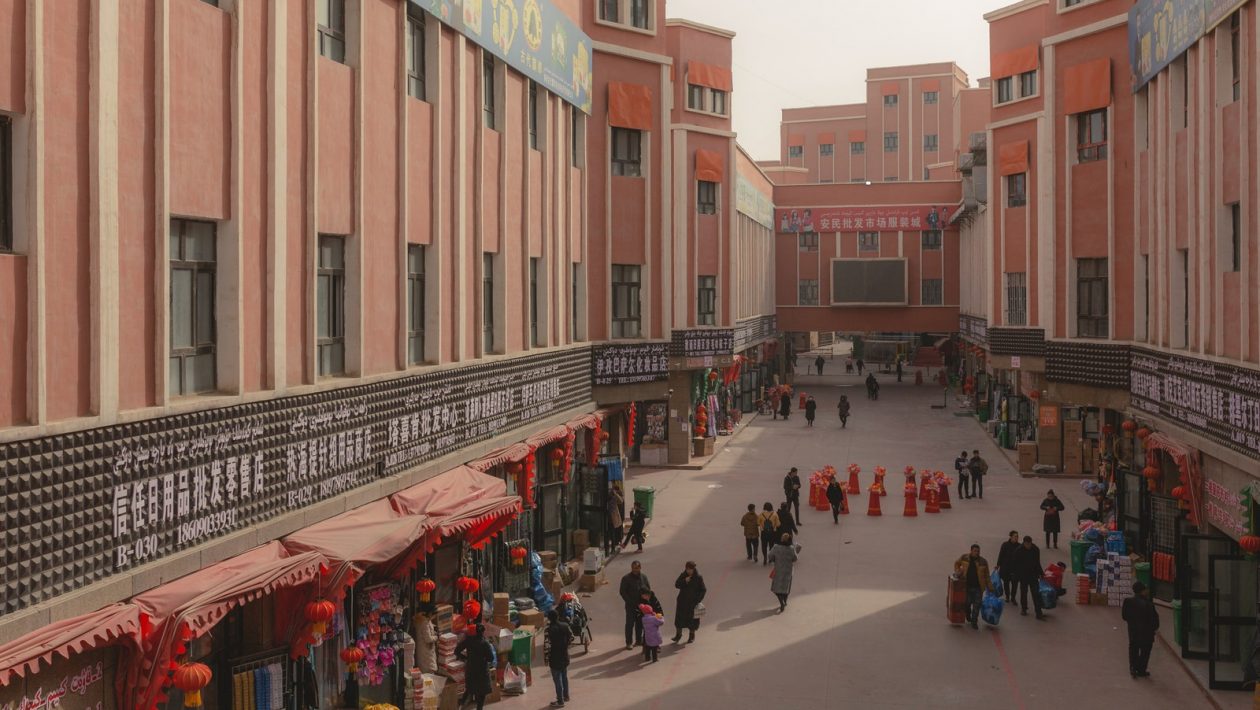In the far-western reaches of China, the Communist party has long tried to eliminate markers of the Muslim ethnic minority group’s identity.
LIKE THE REST of the country, China’s far-western Xinjiang Province is slowly starting to open up after months of near-total lockdown meant to halt the spread of Covid-19. For the past six years, though, the Chinese government has focused on stopping the spread of what they view as a different kind of contagion in the region—the “virus” of Islamic radicalism. “Anyone who has been infected by religious extremism must undergo study,” explained a classified document leaked to the New York Times last year. “Freedom is only possible when this virus in their thinking is eradicated and they are in good health.”
About half of Xinjiang’s 25 million people belong to Muslim ethnic minority groups, the largest of which are the Uyghurs. Muslims have long faced discrimination from the Chinese government, but the repressive measures were radically expanded in 2014 following an outbreak of ethnic violence timed around President Xi Jinping’s visit to the region. Acting on President Xi’s direction, local Communist Party officials rapidly built a series of indoctrination camps that hold an estimated one million Muslim men for months or even years at a time.Related StoriesYOU ARE A NUMBERInside China’s Vast New Experiment in Social RankingPHOTO GALLERYCentral Asia’s Wild Soviet ArchitectureOPRESSIONInside China’s Massive Surveillance Operation
French photographer Patrick Wack first visited Xinjiang in 2016-17 to shoot a series inspired by American landscape photography. He returned last year, hoping to document the effect of the crackdowns on the local population. “There are police and military checkpoints everywhere now,” he says. “It feels like martial law.” Traditional markers of Uyghur culture had largely disappeared, he noticed. “The women are not wearing veils. Any Muslim or remotely Middle Eastern–looking symbols have been removed. It was a completely different place.”
Most startling was the conspicuous absence of men aged 20 to 60, many of whom had likely been rounded up and herded into indoctrination camps. Unlike Tibet, where visitors need special permission to visit, Xinjiang is still open to visitors. But in several cities Wack was followed by plainclothes police officers, and at checkpoints he was sometimes asked to show his photographs. On one occasion, he was asked to delete images; fortunately, he kept two copies of the files.
Talking to locals about the camps was impossible. “You can’t really talk to them, because then you’re putting them in danger,” Wack says. “If you mention anything political, they cut the conversation short.” Because he couldn’t visit the camps themselves, he was forced to suggest their presence by documenting how the region has changed. For decades, the Communist Party has been trying to eliminate markers of Uyghur identity and remake Xinjiang so that it appears more “Chinese.” As part of the Belt and Road Initiative, the government has been building major infrastructure projects like high-speed trains and superhighways through the remote province. It has also encouraged Han Chinese, the country’s dominant ethnic group, to move to the area in order to dilute the percentage of Uyghurs living there.
“The people dress more Chinese, they look more Chinese,” Wack says. “The cities are turning into completely Chinese cities. Traditional parts of the cities are either being destroyed or preserved and turned into amusement parks.” Indeed, Xinjiang is an increasingly popular tourist destination for Han Chinese from other parts of the country, who are drawn to the region’s desert landscapes and romantic history as part of the ancient Silk Road. At sites like the Kumtag Desert Scenic Area, visitors get a sanitized glimpse at Uyghur culture and history.
“I talk to some of my Chinese friends, and they’re like, ‘Oh, my parents went to Xinjiang for the first time last year,’” Wack says. “They have access to this Disneyfied version of the region. It’s being exoticized at the same time that the system is annihilating that culture.”
Sadly, if the Communist Party gets its way, the Disneyfied version of Xinjiang may be the only one left.

